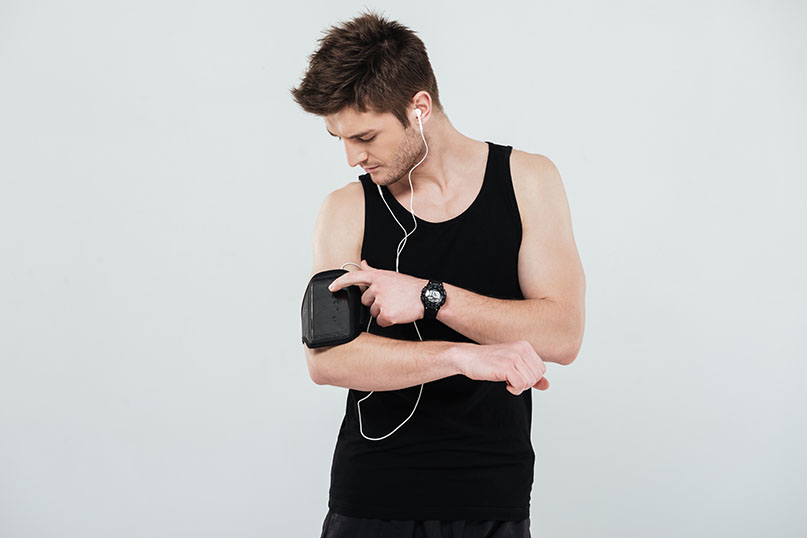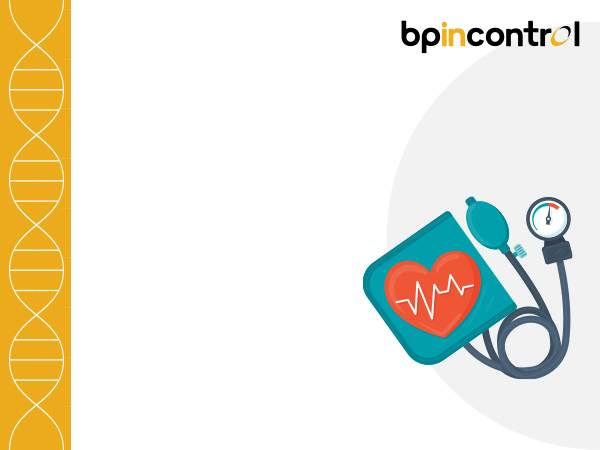Physiology of Blood Pressure Regulation in Athletes

Table of Contents
The connection between athletes and low blood pressure has always been a matter of curiosity. The dominant belief shows that a person doing daily physical activity and indulging in routine extreme training can display low blood pressure. Even though this assumption can be correct to some extent, this relationship is not a one-size-fits-all scenario.
When the blood pressure falls, a state of hypotension is established. This scenario is the aftereffect of less force exerted by blood against the walls of arteries. To measure this drop in blood pressure, millimeters in mercury (mmHg) is the used for accurate results. Two values symbolize it– systolic over diastolic pressure, the former being the pressure when the large chambers of the heart contract, while the latter is when the smaller chambers contract. The ratio of normal blood pressure is about 120/80.
This article will unveil the complex bond between athletes and blood pressure because of the influences that can contribute to the fluctuations in readings.
It will answer the question of whether hypotension is a normal state of being during or after training. By identifying the complex relationship between athletes and their blood pressure, we can find a proper answer to the question of “do athletes have low blood pressure?”
One can’t deny that daily physical work is healthy for cardiovascular function. If you are involved in exercise, then there will be improvements in your heart function, and blood vessel flexibility will be enhanced. So, in return, various athletes go through healthy changes that affect blood pressure.
When an athlete exercises, there is a short-term rise in blood pressure as the heart starts pumping more energetically to supply oxygen and nutrients to working muscles. This sharp rise in blood pressure is a much-needed natural response as there is a demand for oxygenated blood on physical exertion. With time, regular exercise boosts cardiovascular adaptations and helps in improved functions of blood vessels. In other words, the blood vessels “learn” the athlete’s unique cycle of blood flow and in turn, the pressure within them adapts to their unique needs.
Studies have shown that after a bout of intense exercise, blood pressure in athletes tend to be lowered by about 8-15 mmHg. One of the physiological explanations for this phenomenon is that in trained athletes, during the post-exercise period, blood accumulates in the muscles which were activated during the workout. This pooling of blood in the veins of the muscles reduces the overall volume of blood that passes through the heart. This in turn, as per the logic of biological systems, specifically the circulatory system, reduces the blood pressure. In other words, as the heart doesn’t need to pump as much as blood as it usually does due to pooling in the veins, the pressure generated during each pumping cycle is low.
Types of Hypotension in Athletes
Athletes can go through many forms of hypotension or low blood pressure. The factors influencing hypotension in athletes can be varied, so it is crucial to differentiate between normal adaptations during training and possible troublesome conditions. Some forms of hypotension that may be seen in athletes are:
- Postural or Orthostatic Hypotension:
This type of hypotension is due to suddenly standing up after sitting or lying. The reason is that blood pooling occurs in the lower portion, which leads to decrease volume reaching the heart.
- Exercise-induced hypotension (EIH):
It happens when there is a momentary drop in blood pressure during or instantly after exercise. The cause for this condition is intense physical activity, and the blood gets redistributed to functioning muscles. This overall leads to a decrease in blood pressure and a general opening of blood vessels which are ready to receive more blood in the next cycle.
- Dehydration-related hypotension:
It is caused by less intake of fluid or more fluid loss during exercise. Dehydration can result in a drop in blood volume and weaken the cardiac output, which leads to unfavorable outcomes for the body.
- Vasovagal Syncope:
Stress caused by emotions, pain, or any medical condition can lead to an abrupt drop in blood pressure, which sometimes causes fainting in athletes. The factor responsible is the overstimulation of the vagus nerve.
- Heat-Related Hypotension:
Excessive heat and improper cooling can lead to low blood pressure during exercise. It happens due to vasolidation and more sweating, thus causing a decline in blood pressure.
Causes of Hypotension in Athletes
Adaptation to exercise:
Athletes usually feel a sharp drop in blood pressure when doing exercise. It happens because functional muscles go through vasolidation. In other words, the blood vessels in the muscles adapt to accumulate more blood as they are repetitively activated during exercise. It increases cardiac output and is considered a normal adaptation to fulfill the demand for oxygen and nutrients during physical work.
Training-Induced Changes:
Daily exercise can bring adaptations for a long time in the cardiovascular system, like increasing the stroke volume (amount of blood pumped during each heart beat), improving cardiac efficiency, and enhancing the vasodilatory capacity (degree to which blood vessels expand). These adaptations are responsible for lower resting blood pressure in athletes as more blood tends to be stored for longer durations in peripheral blood vessels.
Dehydration and Heat:
Dehydration and heat can be the factors for worsening hypotension in athletes. So, maintaining appropriate hydration during workouts is vital for avoiding a remarkable drop in blood pressure during exercise.
Individual Variability:
Genetics, age, dietary habits, hydration status, and general health are the individual variables that affect blood pressure. These are responsible for the divergence in blood pressure readings among athletes. It is common for athletes to have blood pressure levels that lie between standard and high, depending on their health condition.
Symptoms of Hypotension in Athletes:
- Shortness of breath
- Blurred vision
- Weakness or Lack of Coordination
- Fainting
- Paleness or Pallor
- Nausea
- Dizziness or Lightheadedness
- Cold and Clammy Skin
Monitoring and Individualized Approach:
Athletes, like everyone else, should make it a habit to check their blood pressure.
The vital steps in balancing normal cardiovascular health are knowing one’s individual baseline readings, keeping track of the changes occurring over time, and identifying the possible warning signals. It’s more efficient to collaborate with healthcare professionals as this will help build a personal approach to the overall well-being of a person.
Conclusion:
The connection between athletes and blood pressure depends on many factors and is multifaceted. While lower resting blood pressure may be a natural and even positive influence of athletes doing daily exercise for, it is important to monitor constantly and understand when this shift crosses unhealthy limits. When evaluating blood pressure in athletes, varied factors such as sport type, lifestyle choices, individual differences, and overall health are also matters of consideration.
Athletes need to give priority to a holistic strategy for their overall health. So for this, they need to not only concentrate on their training but also get adequate nutrition, sufficient sleep, and keep themselves hydrated. They can also seek professional advice for personal health assessments and to monitor their heart functioning.
FAQs
1. What are the factors contributing to lower blood pressure levels in athletes?
Several factors can contribute to low blood pressure in athletes, including natural adaptation to exercises as well as unhealthy factors like dehydration, lack of proper nutrition, excessive stress, etc. However, in essence, individual blood pressure readings of athletes can vary depending on several involuntary factors such as type of sport, age, and genetic composition, to name a few.
2. Can regular exercise and physical training lead to chronic low blood pressure in athletes?
Studies have found that low blood pressure is a natural adaptation to continual intense exercise routines as the blood in the bodies of trained athletes tend to pool in the muscles. Due to this, the heart pumps blood slower than usual owing to the low volume in circulation. However, chronic low blood pressure is not natural nor is it healthy. Chronic hypotension in athletes occurs when the individual is not taking the necessary precautions during their training, such as proper hydration, measured and staggered exercise routines, warming up, ensuring sudden changes in posture are avoided, etc.
3. Can low blood pressure affect an athlete's performance or recovery after exercise?
Low blood pressure to a certain degree (8-15 mmHg lower than normal blood pressure) is natural in athletes. However, anything lower than this or major erratic or abrupt changes in blood pressure can impact recovery after exercise as well as overall performance. Some of the many debilitating effects of chronic hypotension includes fainting spells, lack of proper muscle coordination, blurry vision, etc.
Source Links
https://www.researchgate.net/profile/Scott-Thomas-8/publication/229064001_Blood_pressure_reduction_following_prolonged_exercise_in_young_and_middle-aged_endurance_athletes/links/0912f510bfc8540bd6000000/Blood-pressure-reduction-following-prolonged-exercise-in-young-and-middle-aged-endurance-athletes.pdf
https://www.ahajournals.org/doi/full/10.1161/01.hyp.0000184225.05629.51#:~:text=In%20conclusion%2C%20aerobic%20endurance%20training,affects%20concomitant%20cardiovascular%20risk%20factors.
https://www.medicinenet.com/what_is_the_blood_pressure_of_a_very_fit_person/article.htm
https://blog.nasm.org/low-blood-pressure-and-exercise
Disclaimer
The information contained in this article is to educate, spread awareness in relation to hypertension and other diseases to the public at large. The contents of this article are created and developed by BPinControl.in through its authors, which has necessary, authorisations, license, approvals, permits etc to allow usage of this articles on The Website. The views and opinions expressed in this article are views, opinions of the respective authors and are independently endorsed by doctors. Although great care has been taken in compiling and checking the information in this article, The Website shall not be responsible, or in any way liable for any errors, omissions or inaccuracies in this article whether arising from negligence or otherwise, or for any consequences arising therefrom. The content of this article is not a substitute for any medical advice. The Website shall not be held responsible or liable for any consequence arising out of reliance on the information provided in the article.


Comments (0)
No comments found.Add your comment